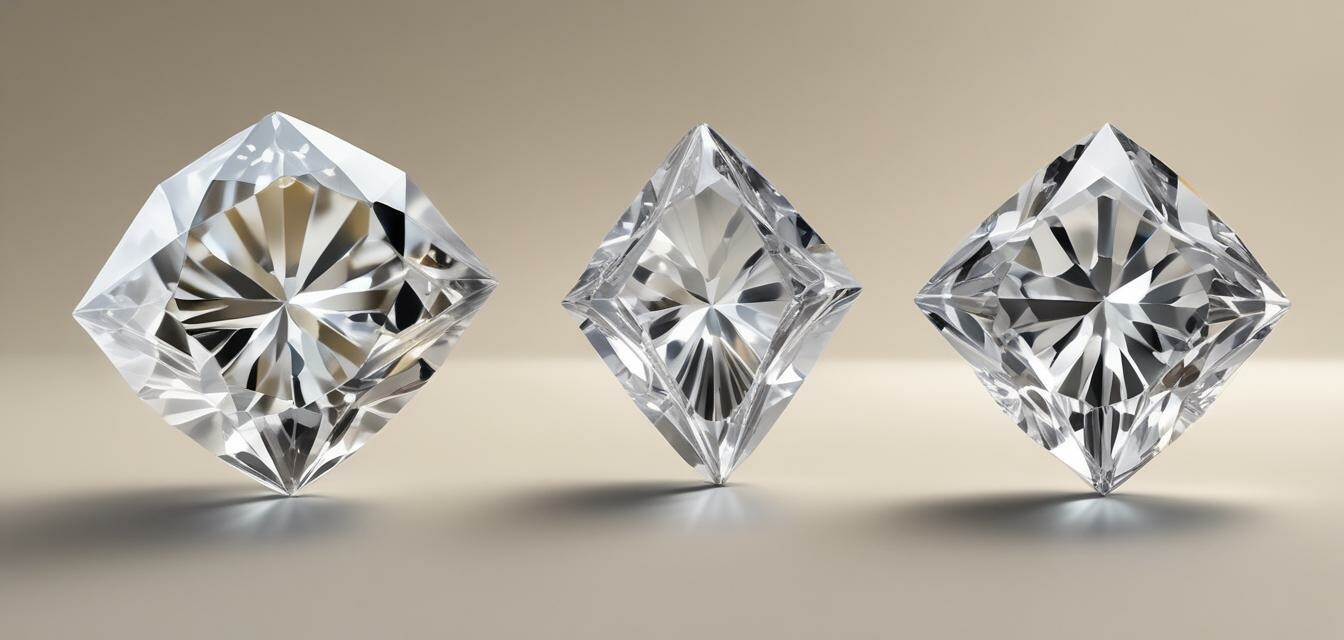
Comparing natural vs. lab-grown diamonds
Key Takeaways
- Natural diamonds are formed over billions of years, while lab-grown diamonds are created in weeks.
- Both types of diamonds are chemically identical, but their origins and prices differ significantly.
- Lab-grown diamonds can be more environmentally friendly and cost-effective.
- Consider your values and preferences when choosing between natural and lab-grown diamonds.
Choosing the perfect engagement ring can be a daunting task, especially when it comes to selecting the type of diamond. With the rise of lab-grown diamonds, buyers are presented with new options alongside traditional natural diamonds. In this article, we will delve into the comparison of natural versus lab-grown diamonds, exploring their unique attributes, benefits, and considerations to help you make an informed choice.
Understanding natural diamonds
Natural diamonds are formed deep within the Earth's crust over millions to billions of years. Their unique geological origins impart specific characteristics that can make them especially desirable. Here are some key aspects of natural diamonds:
- Authenticity: Each natural diamond is unique, with its own inclusions and imperfections.
- Value: Natural diamonds hold their value over time, often appreciating as they become scarcer.
- Heritage: Many buyers appreciate the romantic notion of a diamond that is formed through natural processes.
The journey of natural diamonds
Natural diamonds undergo a fascinating journey before they reach the hands of consumers.
| Stage | Description |
|---|---|
| Formation | Under extreme pressure and heat in the Earth’s mantle. |
| Mining | Extracted through various methods, often with significant environmental impact. |
| Cuts & Polishing | Transformed into gems through expert craftsmanship. |
| Certification | Graded based on the 4Cs: Cut, Color, Clarity, and Carat weight. |
Exploring lab-grown diamonds
Lab-grown diamonds are created using advanced technological processes that simulate the natural diamond formation. They possess the same physical and chemical properties as natural diamonds, but come with a different set of considerations:
- Affordability: Generally, lab-grown diamonds are less expensive than their natural counterparts, making them an attractive option for budget-conscious buyers.
- Ethics: Lab-grown diamonds are often marketed as a more ethical choice, free from the concerns associated with conflict or blood diamonds.
- Environmental Impact: Generally seen as more eco-friendly, although it's essential to research specific practices of the lab.
The creation of lab-grown diamonds
Lab-grown diamonds can be produced through two main methods:
- High-Pressure High Temperature (HPHT): Mimics natural diamond formation.
- Chemical Vapor Deposition (CVD): Involves creating a diamond from carbon gas.
Comparing natural and lab-grown diamonds
When considering your options, it's crucial to weigh the benefits and considerations of both types of diamonds. Below is a comprehensive comparison:
| Factor | Natural Diamonds | Lab-Grown Diamonds |
|---|---|---|
| Origin | Formed in nature over billions of years | Created in labs in weeks |
| Cost | Tend to be more expensive | Generally more affordable |
| Environmental Impact | Mining can harm ecosystems | Lower impact but depends on energy source |
| Value Retention | Typically retain or increase in value | Value can depreciate faster |
| Visual Appearance | Natural inclusions and uniqueness | Often flawless and rarely have inclusions |
Making the decision
Ultimately, the choice between a natural and a lab-grown diamond comes down to personal preference and values. Consider these questions:
- What is your budget?
- Do you prioritize ethical considerations?
- Is the uniqueness of a natural diamond important to you?
Conclusion
Both natural and lab-grown diamonds offer stunning beauty and have unique stories to share. By understanding the differences between these two options, you can confidently choose a diamond that resonates with your values and fits your needs. For more in-depth insights, check out our related articles on buying guides, current diamond trends, and engagement rings.
Pros of natural diamonds
- Unique character and authenticity.
- Potential for long-term value appreciation.
- A rich history and emotional connection.
Cons of natural diamonds
- Higher cost compared to lab-grown options.
- Environmental and ethical concerns due to mining.
Pros of lab-grown diamonds
- More affordable pricing for similar qualities.
- More ethical and environmentally friendly options.
- Consistency in quality and appearance.
Cons of lab-grown diamonds
- May not hold value over time as well as natural diamonds.
- Lack of unique character or story.